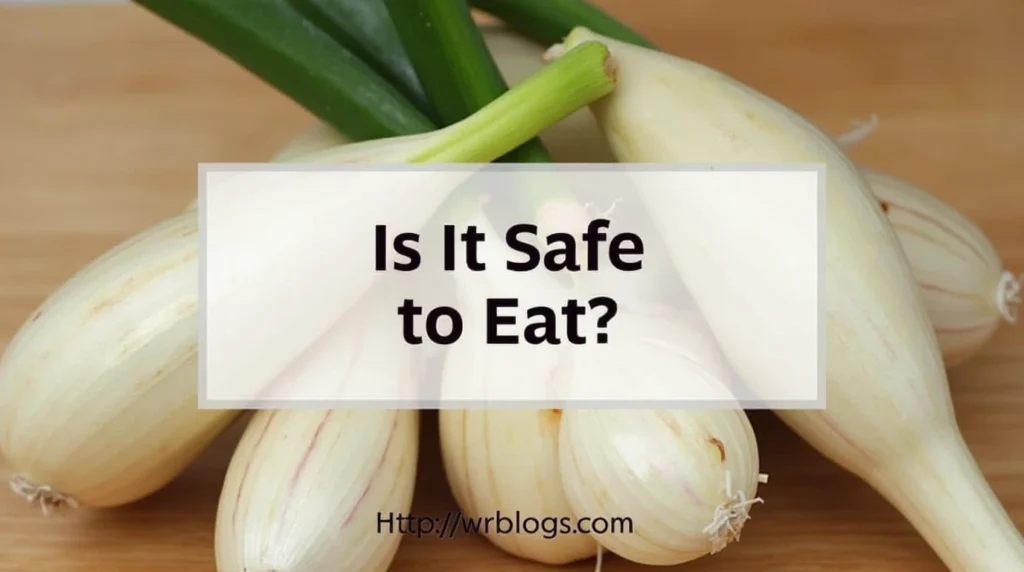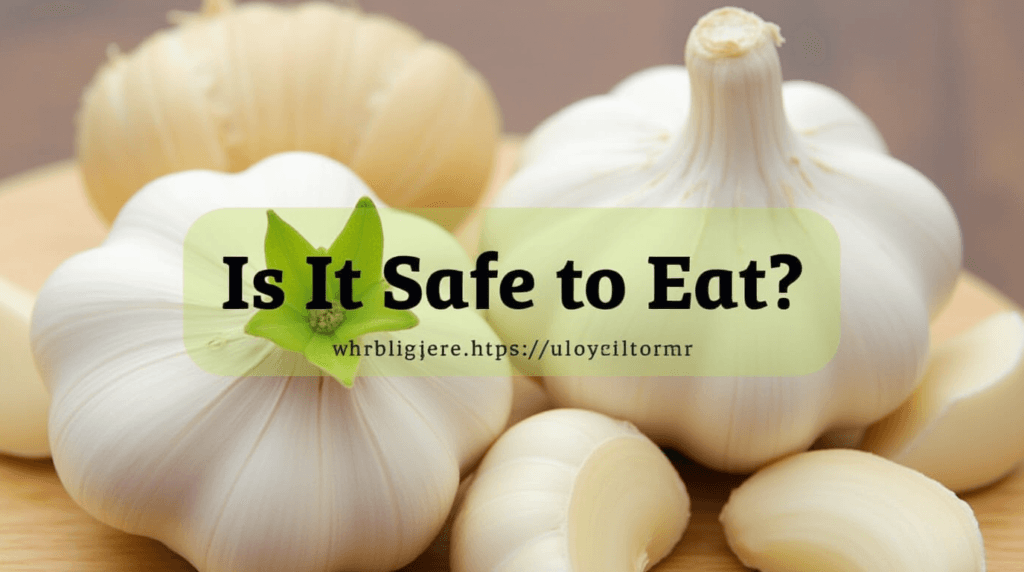What’s the Green Sprout in Garlic? Is It Safe to Eat and How Does It Affect Flavor?
Imagine this: you’re preparing a recipe and slicing through a fresh garlic clove when you suddenly spot a green sprout right in the middle. You might feel a bit surprised—or even concerned. What does this green sprout in garlic mean? Is it safe to eat? Or should you toss it out and start fresh? In this article, we’ll explore what that green sprout really is, how it impacts the taste of your dish, and whether or not it’s safe to consume. By the end, you’ll know exactly how to handle garlic sprouts and keep your garlic fresh for longer.
Table of Contents
What Is the Green Sprout Inside Garlic?
Garlic is a plant, and like any plant, it has the potential to sprout. When you see a green sprout in garlic, you’re actually looking at something called a “garlic germ.” This is a small, green stem that develops in the center of a clove as it begins to age. This sprouting process occurs when garlic has been exposed to certain conditions, especially humidity and light, or simply as garlic ages over time.
If you were to plant a clove with a garlic germ, it could eventually grow into a new garlic plant. So, while a green sprout in garlic might look a bit off-putting, it’s actually a natural occurrence. But before you toss it into your recipe, it’s good to understand how this little green sprout in garlic might change the flavor of your dish.
Is Sprouted Garlic Safe to Eat?
The short answer is yes—sprouted garlic is safe to eat. You won’t get sick from using a clove with a green sprout in garlic. However, there are a few factors to keep in mind. First, while it’s safe, sprouted garlic can have a more intense and sometimes bitter flavor than fresh garlic without a sprout. This bitterness comes from the germ itself, which may be unappealing in certain recipes, especially those that rely on garlic for a milder taste.
Studies have even shown that sprouted garlic might contain higher levels of antioxidants than non-sprouted garlic. So not only is that green sprout in garlic safe, but it could also offer extra nutritional benefits. Still, the taste can be a bit off-putting depending on how you’re using it. Here’s what you should know about the flavor impact and how to work with sprouted garlic to get the best results.
Does the Green Sprout Affect the Flavor of Garlic?
The green sprout in garlic doesn’t just look different; it tastes different, too. Sprouted garlic is known for having a sharper, more pungent flavor than fresh garlic. This can result in a more bitter taste, especially if you’re using garlic raw or in recipes that showcase its natural flavor.
If you plan to use garlic with a green sprout, you might want to consider your recipe carefully. In milder dishes, such as salad dressings or marinades, the bitterness of sprouted garlic can stand out. However, if you’re cooking a dish with stronger flavors—think soups, sauces, or roasted vegetables—the bitterness may be less noticeable.
To avoid any unwanted bitterness, you can also remove the green sprouts in garlic before using it. Simply slice the clove in half lengthwise, and use the tip of your knife to carefully lift out the green sprout. This small step can make a big difference, helping your garlic retain its original flavor without the extra bite.

How to Use Garlic with Green Sprouts
So, you’ve got a clove with a green sprout in garlic—now what? If you’re ready to use it, here are some tips for getting the most out of sprouted garlic:
- Remove the Sprout for Raw Dishes: If you’re using garlic in something uncooked, like a dressing or dip, remove the sprout to reduce bitterness.
- Cook It in Sauces and Soups: The flavors in sauces, soups, and stews can mask the slight bitterness of sprouted garlic, making it a great choice for these dishes.
- Chop It Finely or Press It: Breaking down the garlic by chopping or pressing can help release its flavor, blending it smoothly into your recipe.
For those who enjoy experimenting in the kitchen, sprouted garlic can be a fun way to add a sharper note to your cooking. Here’s a table of ingredient ideas for various dishes that pair well with sprouted garlic:
| Dish Type | Ideal Pairing Ingredients |
|---|---|
| Pasta Sauces | Tomatoes, basil, red pepper flakes |
| Vegetable Soups | Carrots, celery, onions |
| Roasted Meats | Rosemary, thyme, black pepper |
| Stir-Fries | Ginger, soy sauce, bell peppers |
The next time you’re faced with a green sprout in garlic, consider the recipe at hand and make adjustments as needed. With a bit of experimentation, you can still make the most out of sprouted garlic.
How to Tell If Garlic Has Gone Bad
Sometimes, you might notice a green sprout in garlic, but that’s not the only sign that garlic has aged. While sprouting doesn’t mean the garlic is unusable, there are some signs that it’s no longer safe to eat. Here’s what to watch for:
- Soft or Mushy Texture: Fresh garlic should feel firm to the touch. If it’s soft or mushy, it may be past its prime.
- Discoloration: Look out for yellow or brown spots, which can indicate spoilage.
- Mold Growth: Garlic with visible mold isn’t safe to eat and should be discarded.
- Sour or Off Odor: Fresh garlic has a pungent but pleasant aroma. If it smells sour or unusual, it’s best to toss it.
If your garlic shows any of these signs, it’s best to dispose of it or compost it. While a green sprout in garlic is safe, these other signs mean it’s time for a fresh bulb.
Best Ways to Store Garlic to Prevent Sprouting
To keep your garlic fresh and prevent it from sprouting, proper storage is key. Here are some tips to help extend the shelf life of your garlic:
- Cool, Dry, and Dark Place: Garlic lasts longest when stored in a cool, dry, and dark place, such as a pantry.
- Avoid Moisture: Humidity can encourage sprouting, so avoid storing garlic in plastic bags or near the sink.
- Use Mesh Bags: For optimal airflow, store garlic in a mesh bag or a paper bag.
- Keep It Out of the Refrigerator: Refrigerating garlic can actually speed up sprouting due to the moisture inside the fridge.
For those who use garlic less frequently, consider freezing or dehydrating it for long-term storage. Freezing garlic won’t prevent sprouting, but it can extend its freshness and make it easy to add to dishes when you need it.

FAQ Section
Is the green sprout in garlic harmful?
- No, the green sprout in garlic is safe to eat, although it can have a slightly bitter flavor.
How can I make sprouted garlic less bitter?
- Removing the sprout before using the garlic can help reduce bitterness, especially in raw dishes.
What causes garlic to sprout?
- Age, exposure to light, and humidity can all contribute to sprouting in garlic.
How should I store garlic to prevent sprouting?
- Store garlic in a cool, dry, and dark place, like a pantry, to reduce the chances of sprouting.
Conclusion
A green sprout in garlic may catch you off guard, but it doesn’t mean your garlic is unusable. While sprouted garlic can have a stronger flavor, it’s perfectly safe to eat and even offers potential health benefits. By removing the sprout when needed and using sprouted garlic thoughtfully, you can make the most of your garlic, no matter how long it’s been in the pantry. Just remember to store it in a cool, dry, and dark place to prevent sprouting and extend its shelf life.
So, next time you spot a green sprout in garlic, don’t worry—simply follow these tips, and enjoy your flavorful cooking journey! Whether you’re using it in a soup, a stir-fry, or a salad dressing, garlic is as versatile as it is flavorful. Share this guide with friends who might wonder about that green sprout, and let’s keep our kitchens fresh and flavorful!
There are no reviews yet. Be the first one to write one.







